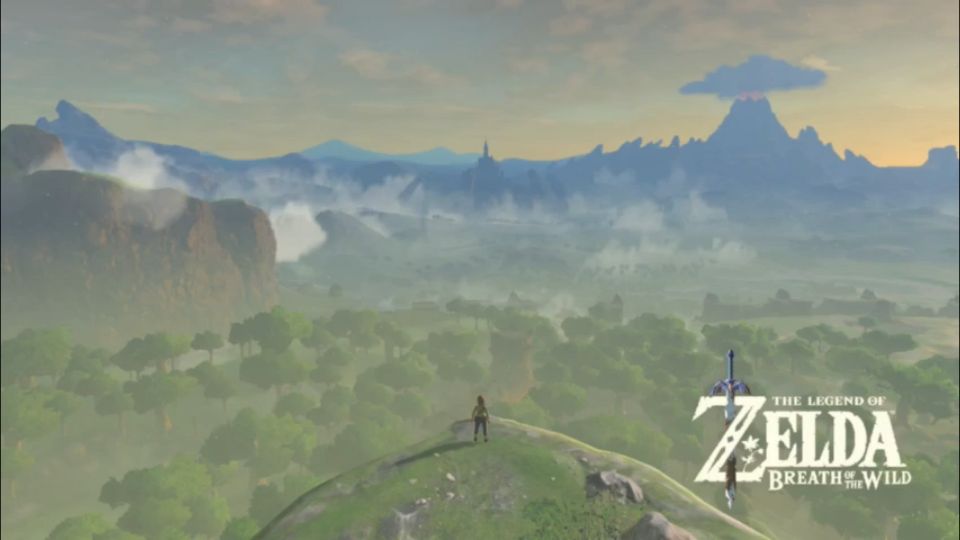I've always loved The Legend of Zelda, and yet writing about video games often felt out-of-bounds in school. Not anymore!
The Legend of Zelda: Breath of the Wild has established, among many things, a sense of wonderful expanse. From the initial panorama of the open world, to the player’s soaring departure from the Great Plateau, the world is a constant place of possibility.

The music in Breath of the Wild is like the game––it’s open, sometimes sparse, and its details slowly emerge as you proceed through it. For longtime fans of the series, one might be disappointed at the lack of indulgent scoring throughout much of their adventure. What music is present comes by way of glimpses, whispers, and quick flourishes in tandem with heightened action. Far from an orchestra sounding just off-screen, notes unfurl into the ether where they dissipate like passing rain. It is somewhat obvious to say that the soundtrack to Breath of the Wild participates in world-building. It does so not only by accompanying the player’s actions, but also by wandering as aimlessly at times as the player themselves throughout Hyrule. It is their traveling companion.
Like the player, this music holds fast to its memories. Hidden within the soundtrack, there are further allusions to the mythology of the series. Take, for instance, the music that plays at the Temple of Time. In ruins, the structure stands in stark contrast our proud and nostalgic recollection. Speed up this music, however, and we find that the Temple of Time is set to, of course, the Song of Time.
The Song of Time emerges from the broken fragments of melody that flutter amidst the ruins. Its presence is known mainly through extended time milling about. Veiled, it lives on in vestiges of its former self that surface from moment to moment. Only in contemplation do we consider what we’ve heard. Even more, only in compression and transformation can we return it to its original state. (This is particularly near and dear to the hearts of fans, as it reminds us that controlling time is central to the Zelda mythology.) In this way, the music is directly mapped onto the space to which it has been intimately bound over the years.
I see resonance here with Michel de Certeau’s ideas of place and space. A helpful summary comes from Marc Augé’s Non-Places: An Introduction to Supermodernity, where he writes that “place [is] an assembly of elements coexisting in a certain order and the space [is the] animation of these places by the motion of the moving body” (Non-Places, 64-65). By moving through the game’s world, we are participating in the construction of meaningful anthropological space. The technique of map-making in the game suggests this; most locations are revealed and given names upon discovering and exploring them. This focuses the player on ordering space as an anthropological arena of non-player character (NPC) and enemy interaction.
For Augé, “place” carries with it immanent possibility. “Space,” on the other hand, is considered far more abstract and open—an expanse either geographically or temporally that must be traveled. The movement of the traveler, then, is central to ordering and understanding your environment. This is clearly true for a video game, whose boundaries allow the travelling player to eventually uncover the possible game space in its near totality; there comes a point in-game when exploration no longer yields the possibility of new space. (This is practically untrue in reality, where travel and transitional spaces form the crux of Augé’s philosophical idea of the “non-place” as spaces meant to be passed through and which depend on contractual anonymity.)
Alone, we might think of Breath of the Wild’s soundtrack as part of the geographic place—an element that contributes to our order and understanding of the spot where we hear it. Location-specific music further suggests this. And yet, within these locations, there’s a sense of movement about the music. It wafts, trickles, darts in and out among the ambient noise of wildlife and weather. But the music also presents a sonic space, an expanse of time and sound that we must aurally travel. Upon listening, we identify what we hear. In that moment, we tether the music to its place—our associations binding it to the power of presence.